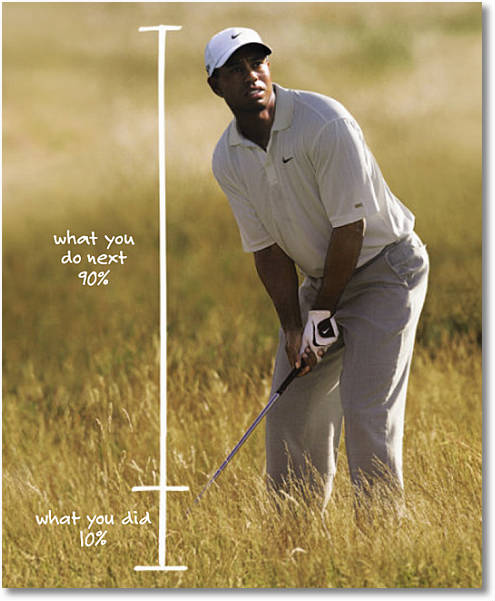Flickr version here.
Karl Popper and the stolen emails
I don’t normally link to AP stories because of their somewhat aggressive stance towards bloggers, but they have performed a useful service by doing a detailed and — as as far as I can judge — pretty detached study of the UEA email trove. The overall conclusion:
E-mails stolen from the computer network server of the climate research unit at the university show climate scientists stonewalled skeptics and discussed hiding data, but the messages don't support claims that the science of global warming was faked.
I had thought of going through the trove myself but desisted because (a) they were stolen, (b) they were downloadable only as a zip file from a .ru server and (c) laziness, so it’s interesting to see what a detailed study reveals.
At first sight, the UEA people seem to be too jokily dismissive of climate change ‘sceptics’, and that’s obviously embarrassing. But there’s a context here: what the stolen emails don’t reveal is the level of intrusive, aggressive harassment that climate change researchers can face from sceptics and deniers. The tool of choice of these people (some of whom are clearly obsessives) is FOI requests and these are very blunt and time-consuming instruments. I imagine that the UEA researchers were constantly bombarded with these, and might understandably have developed a siege mentality — traces of which are clearly visible in the emails.
The other thing that’s interesting about the AP analysis is the light it throws on the real — as opposed to the idealised — practice of science. Students of these things will remember that the criterion that Karl Popper proposed for deciding whether an activity is scientific or not is whether its practitioners actively seek ways of falsifying their theories (as distinct from ways of verifying them). This seemed to me to fly in the face of everything we know about science in practice: in order to make real advances in a field one has to be an absolutely passionate advocate for a theory. The last thing one wants to do is pick holes in it; that’s the job of others (and of the peer-review process). Very few scientists are falsificationists in the Popperion sense — at least about their own theories. So it’s hardly surprising that the UEA researchers might express in private emails what might seem, in retrospect, to be a less than detached attitude towards their theoretical findings and beliefs. They’re perfectly normal scientists.
Thanks to Roger Highfield of New Scientist for the original link.
Later: My colleague Joe Smith has a thoughtful blog post about this, in which he says, en passant:
The IPCC has serious limitations, including a gaping hole when it comes to investigating the social, cultural and philosophical dimensions of climate change, but it remains the most ambitious peer review process modern science has undertaken. The truth about climate science is that it is inevitably messy and unfinishable – its a hugely complex system we’re trying to understand – but that hard intellectual work conducted by a very large number of people (who win little publicity and are modestly rewarded) is doggedly narrowing the boundaries of uncertainty. There is, almost all climate science researchers agree, plenty of justification for very urgent and bold action.
How we came to see the world differently
This morning’s Observer column.
Bell scientists also were responsible for the laser, many of the technologies used in radio astronomy and mobile phones, wireless local area networking, information theory, the Unix operating system and the C programming language. Seven Nobel prizes have been awarded for work done at Murray Hill.
The latest of these for physics was presented in Oslo last week to Willard Boyle and George Smith, who on 17 October 1969 were trying to come up with an idea that would stop their boss’s boss switching resources from their work to another department working on sexy new kinds of computer memory. In a discussion that lasted “not more than an hour” as Smith later recalled they came up with a device that changed the way we see the world. They called it a charge-coupled device or CCD, and it developed into the sensor at the heart of most digital cameras in use today.
If you want to see the fruits of their work, log on to Flickr.com, the world’s leading image-hosting site. Launched in 2004, it was bought by Yahoo in 2005 and now holds more than 4bn images. Since you began reading this column, more than 600 pictures have been uploaded to it, automatically resized and each assigned a unique URL. It is one of the wonders of the modern world…
Barnes & Noble’s Nook eReader: the sucker syndrome
David Pogue of the New York Times has just killed it stone dead. Sample:
Unfortunately, we, the salivating public, might be afflicted with a little holiday disease of our own: Sucker Syndrome. Every one of the Nook’s vaunted distinctions comes fraught with buzz kill footnotes.
That “color touch screen,” for example, is actually just a horizontal strip beneath the regular Kindle-style gray screen. (In effect, it replaces the Kindle’s clicky thumb keyboard.)
This screen is exclusively for navigation and controls. Sometimes it makes sense; when you’re viewing inch-tall book covers, for example, you can tap to open one.
At other times, the color strip feels completely, awkwardly disconnected from what it’s supposed to control on the big screen above.
Worse, the touch screen is balky and nonresponsive, even for the Nook product manager who demonstrated it for me. The only thing slower than the color strip is the main screen above it. Even though it’s exactly the same E Ink technology that the Kindle and Sony Readers use, the Nook’s screen is achingly slower than the Kindle’s. It takes nearly three seconds to turn a page — three times longer than the Kindle — which is really disruptive if you’re in midsentence.
Often, you tap some button on the color strip — and nothing happens. You wait for the Nook to respond, but there’s no progress bar, no hourglass, no indication that the Nook “heard” you. So you tap again — but now you’ve just triggered a second command that you didn’t want.
It takes four seconds for the Settings panel to open, 18 seconds for the bookstore to appear (over Wi-Fi), and 8 to 15 seconds to open a book or newspaper for the first time, during which you stare at a message that says “Formatting.”
“Over one million titles?” Yes, but well over half of those are junky Google scans of free, obscure, pre-1923 out-of-copyright books, filled with typos. (They’re also available for the Kindle, but Amazon doesn’t even count them).
Fact is, Amazon’s e-book store is still much better. Of the current 175 New York Times best sellers, 12 of them aren’t available for Kindle; 21 are unavailable for the Nook.
Kindle books are less expensive, too. Inkmesh.com studied the top-selling 11,604 books for early November, and found that 74 percent of the time, Amazon offers the lowest-priced e-books (cheaper than B&N or Sony) by an average of 15 percent.
What about the Nook’s built-in Wi-Fi? It’s there, but you get no notification when you’re in a hot spot. And if the hot spot requires a login or welcome screen, you can’t get onto it.
And the “loan e-books to friends?” part? You can’t lend a book unless its publisher has O.K.’ed this feature. And so far, B&N says, only half of its books are available for lending — only one-third of the current best sellers. (A LendMe icon on the B&N Web site lets you know when a book is lendable.) Furthermore, the book is gone from your own Nook during the loan period (a maximum of two weeks). And each book can be lent only once, ever.
Things we take for granted
A Tweet from Clay Shirky just now:
We take it for granted, but Google really is a daily miracle. Found something I read 10 years ago, w/no author, date, or title, in 5 seconds.
Is the DMCA a scam? Or how to censor the web
You think the DMCA is just about anti-circumvention? Think again. This comes from Aaron Swartz’s blog.
I received my first DMCA takedown notice today. I published publicly-available IRS information about the nonprofit Kwaze-Kwasa [USA] Inc. Kwaze-Kwasa sent a letter to my ISP asking that it be taken down. I do not know why they want to keep this public information off the Internet, but I do know that the law lets them.
For those who aren’t familiar, the Digital Millennium Copyright Act contained a section known as OCILLA (distinct from its also-famous anticircumvention provisions) that regulates publishing copyrighted material online.
There are three big parties with interests in this subject: copyright holders, who want strong tools to keep copyrighted material offline; ISPs, who don’t want copyright law to apply to them’ and Internet users, who want to be able to publish and read interesting content. OCILLA was largely written by ISPs and pretty much maximizes their interests at the expense of copyright holders and users.
I’m very glad that copyright holders get the short end of the stick — they want to modify the law to make sites like YouTube illegal, just because some people upload copyrighted material to it. If they had their way, websites based around user-generated content would pretty much be impossible.
But I am frustrated the law doesn’t do enough for users. The takedown notice I was sent was obviously bogus — it didn’t even allege a copyright violation, since the information I published wasn’t even copyrightable (it was all basic facts and statistics published by the US government). Yet my ISP informed me that if I didn’t take the page down, they’d take my entire website offline. And they have to do that because if they don’t, they can be sued under the copyright law and could face very heavy penalties.
Maybe he should change his ISP. Cory Doctorow can advise.
How to win friends and influence people (not)
From the If-You’re-Really-Desperate Department: some advice.
If you’re giving a presentation, make sure your script is full of tweetable content. Think in terms of 140 characters or less. As you’re preparing, literally write out those tweetable points to ensure they’ll fit with room for retweets to spare (right around 100 characters is about right).
If your goal is to share your story not just to those in the room, but their followers as well, this will ensure you’re getting maximum pass-along for yourself and your message.
Tiger: nine down; not clear how many left to play

The number of dames claiming to have discussed Ugandan affairs with Tiger Woods grows daily and now stands at nine, at least according to ABC News.
I suppose it shows how naive I am, but I’m genuinely astonished by this unfolding story. I’m fascinated by golf but never really warmed to Woods. He always seemed so, well, boring and controlled: a golfing automaton. He’s the last man in the world I’d have suspected of hanging out with porn stars and night-club hostesses.
Francis Bacon had a nice aphorism for Tiger’s current plight: “He doth like the ape, that the higher he climbed the more he showed his arse.”
It’d be interesting to be a fly on the wall at the moment in the ad agency that handles the Accenture account. They made such a big deal of Tiger’s invincible, calm, rational image
LATER: This from the Irish Times:
Companies whose endorsements have helped make Woods perhaps the world’s richest athlete, with a fortune estimated at $1 billion, have said they are standing by him.
Oh yeah?
Scoot!
Google adds real-time search to its results page
From VentureBeat.
Google’s results are about to speed up, with what the company says is “the first time ever any search engine has integrated the real-time web into the results page.”
Basically, when users search for something, the most recent news articles and posts on sites like Twitter will be immediately into your results, and those results will be updated immediately as new articles and tweets appear. Google executives are on-stage in Mountain View, Calif. describing the product right now, and while they haven’t offered a comprehensive description of everything that’s included in these results, they did offer a few examples and details:
* If you do a search for “Obama,” you can see the latest news articles and tweets, and as you look at the page, more updates are added as they are published.
* Google has already added time filters to its different search options, so you can just see results from the past day or hour. Now it’s adding an option called “latest,” highlighting these real-time results, as well as an “update” view showing each addition to the search results as it’s published.
* Google will include public updates from Facebook and MySpace users as well, through just-announced partnerships with both companies. [Update: The Facebook deal is limited to Facebook Pages and does not include user profiles.]
* These real-time results will be available on Android phones and iPhones as well.
Google says that to make this happen, it developed “dozens of new technologies” …, such as a language model that can recognize which updates contain new information, and which are just “weather buoys” automatically repeating information posted by others.



